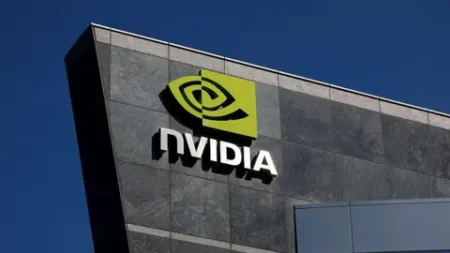The recent emergence of DeepSeek, a Chinese artificial intelligence (AI) application, has dramatically altered the landscape of the tech industry, leaving investors and experts buzzing with debate and speculation. Launched in early August 2025, DeepSeek quickly became a sensation, topping the Apple download charts as the most sought-after free app in the United States. This app, considered a rival to the established ChatGPT, boasted impressive capabilities while being developed at a fraction of the cost. Its rise to fame was not merely a tale of technological success; it also led to significant upheaval in the financial markets, prompting the already established American tech giants to reassess their standings.
The repercussions of DeepSeek’s success were swift and severe. The app’s popularity resulted in a staggering $600 billion loss in market value for significant players like Nvidia, representing the largest single-day decline for a stock in U.S. history. This sudden financial upheaval illuminated the vulnerabilities of American tech companies in the face of emerging competition from China. The narrative began to shift, with many acknowledging that China might not be trailing the U.S. in AI advancements after all; instead, it appeared to be leapfrogging ahead, prompting venture capitalist Marc Andreessen to liken the situation to “AI’s Sputnik moment,” recalling the transformational period of the Cold War.
While the buzz surrounding DeepSeek has since lessened over the past six months, the implications of its arrival are still being felt today. Industry experts and insiders are cautiously optimistic about what DeepSeek represents, challenging the conventional belief that larger, more resource-intensive AI models are the optimal path forward. Sid Sheth, CEO of the AI chip startup d-Matrix, highlights that DeepSeek demonstrated the potential to create efficient AI models without the need for extensive and costly resources. This revelation has spurred some new approaches within Silicon Valley, as companies grapple with how to integrate cost-effective AI solutions without compromising quality.
Despite the initial wave of excitement that led to a frenzied adoption, many organizations quickly moved to prohibit the use of DeepSeek. Concerns surrounding data security were rife, particularly regarding the potential risk of user data being shared with the Chinese government. However, anecdotal evidence suggests that a considerable number of users continue to utilize DeepSeek, with some even employing tricks to run the application locally on their devices to mitigate privacy risks. This dichotomy reveals a complex relationship between user demand for effective AI solutions and the mistrust of their origins.
Experts insist that the emergence of DeepSeek has significantly reshaped the U.S.-China tech rivalry. Wendy Chang, a policy analyst, notes that until DeepSeek’s introduction, perceptions remained that China was playing catch-up in the realm of AI language models. With DeepSeek boasting performance comparable to or even superior to high-cost American counterparts, it demonstrated that China could install competitive AI offerings without needing to follow the established norms.
Despite DeepSeek’s impactful introduction to the global AI market, issues remain regarding its operational capacity. The upcoming release of DeepSeek-R2 has experienced delays, partly due to a shortage of advanced semiconductors, highlighting the ongoing challenges the company faces in scaling its operations. Additionally, the U.S. government continues to probe its connections to the Chinese authorities, with concerns that its technology may be leveraged to support military and intelligence operations.
In response to DeepSeek’s entrance into the market, Western companies are notably ramping up their investment in AI infrastructure. OpenAI’s recent release of open-access models is evidence that the competition has taken notice of DeepSeek’s potential to disrupt established assumptions in the industry. However, this moves towards larger investments and resources in the AI domain reflect a struggle to reconcile the lessons learned from DeepSeek’s efficiency with traditional practices.
As the tech landscape continues to evolve in response to the advancements brought by DeepSeek, it remains to be seen whether legacy technology philosophies will dominate or if a paradigm shift toward efficiency—pioneered by DeepSeek—will become the standard. The ongoing U.S.–China rivalry in AI illustrates how intertwined technology and geopolitics have become, raising fundamental questions about the nature of innovation, competition, and collaboration on a global scale. In essence, while DeepSeek may face challenges ahead, its impact on the industry is likely to resonate for years, prompting profound transformations in AI development and deployment worldwide.











